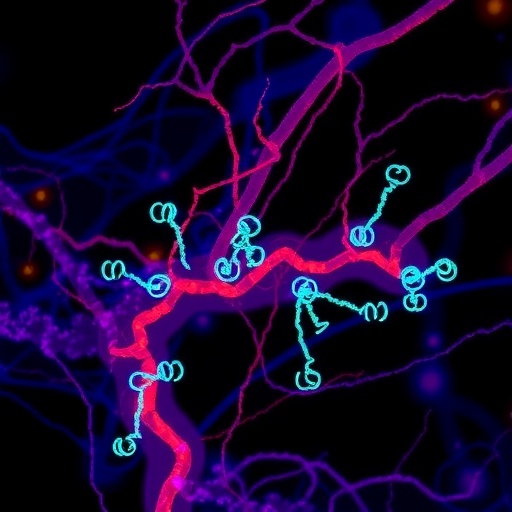
The landscape of immunotherapy is undergoing a remarkable transformation, predominantly due to advancements in T cell engineering. These innovations enable a deeper understanding of T cell interfacesâintegral sites where T cells interact with other cells and tissues. This interaction is critical for the regulation of T cell functions and ultimately dictates how effectively these cells can combat diseases, such as cancer. By harnessing nanotechnology and microtechnology, researchers are experimentally recreating these interactions, providing invaluable insights that can be leveraged for therapeutic applications.
At the core of T cell functionality are the nuanced physical and biochemical interactions that occur at the T cell membrane. This layer is not merely a boundary; it is an active engagement site where T cells communicate with their environment. The specifics of the molecular structures present at the membrane can dictate T cell activation, proliferation, and differentiation. Consequently, understanding these interfaces is crucial for producing therapies that can function optimally in vivo. When these interactions are disrupted or improperly regulated, T cell responses can lead to ineffective therapies or, worse, autoimmunity.
In recent years, researchers have begun to characterize the architectural and biochemical complexities of T cell interfaces at both cellular and tissue levels. By doing so, they have unveiled how these diverse components synchronize to guide T cell dynamics in various physiological contexts. For instance, the presence of specific ligands, extracellular matrix components, and neighboring cell types can significantly influence not only T cell behavior but also their survival and immunity roles. This illustrates the need for precise manipulations to achieve desired therapeutic outcomes.
To explore these dynamics in a controlled manner, scientists are turning to engineered platforms that mimic the natural conditions of T cell activities. Nanoscale and microscale technologies offer unique advantages, allowing for the customization of the physical and biochemical environments that T cells experience. These engineered interfaces can be fine-tuned to evaluate T cell responses to a myriad of signaling molecules or to assess the efficacy of potential drug candidates before clinical trials. The capacity to simulate physiological conditions ex vivo enhances understanding and accelerates the drug discovery process.
Furthermore, these innovative platforms can serve multiple functions, including sorting and screening therapeutic T cells with heightened efficacy. By integrating these nanoscale tools, researchers can identify T cells that exhibit superior anti-tumor activity or those that possess unique phenotypic markers indicative of long-lasting immunity. This precision is essential in developing T cell therapies that are not only effective but also scalable for clinical use.
However, the transition from laboratory research to clinical application poses significant challenges. The manufacturing processes for T cell therapies must accommodate the intricate scaling of these innovative platforms while maintaining consistent product quality and efficacy. Quality assurance becomes a critical focus; any deviation in T cell functionality could compromise treatment outcomes, leading to a need for stringent evaluation protocols.
Moreover, there remains a pressing requirement for detailed mechanistic studies that elucidate the interactions at these engineered interfaces. By understanding the underlying principles governing T cell activation and behavior, researchers can refine their approaches to T cell therapies. The integration of computational models with experimental data can also pave the way for predicting T cell responses in various contexts, enhancing the reliability of engineered T cell products.
Collaboration among multidisciplinary teams including biologists, engineers, and clinical practitioners is crucial for addressing these challenges. As these specialists come together, they can drive innovations that facilitate the translation of engineered T cell therapies from the bench to bedside. This collaborative approach ensures that therapies are grounded in scientific rigor while being adaptable to the ever-evolving landscape of biomedical research.
In summary, the study of T cell interfaces is not merely an academic exercise; it represents a key frontier in the fight against disease. The ability to control and manipulate T cell dynamics through advanced technologies fosters a new era of immunotherapy in which patients could potentially receive tailored treatments designed specifically for their unique immunological needs. Ultimately, as our understanding deepens and technological capabilities expand, we may find ourselves on the cusp of transformative breakthroughs in the realm of personalized medicine.
The journey toward achieving comprehensive T cell engineering is undoubtedly fraught with challenges, yet the potential rewards are immense. As researchers harness the power of nanotechnology and micro-technology to manipulate T cell behavior, the prospect of more effective immunotherapies becomes increasingly feasible. In this era of personalized medicine, the ability to engineer T cells that are both precise and potent may indeed redefine the standards of care for numerous diseases, ushering in a new chapter in the history of medical science.
The ongoing developments in this field raise exciting possibilities not just for cancer therapy, but also for autoimmune diseases and infectious diseases where T cell functions play pivotal roles. The continuing exploration of T cell interfaces will provide essential insights, leading to novel therapeutic strategies that could enhance patient outcomes across various indications. As these innovations unfold, it is imperative for the scientific community to remain vigilant, adaptive, and industrious, ensuring that these advances translate into tangible benefits for patients worldwide.
As the immunotherapy landscape evolves, the integration of engineered T cell technologies will play a crucial role in shaping future therapeutic modalities. The commitment to rigorous research, collaborative exploration, and ethical considerations will be paramount in leveraging these findings for real-world applications, ensuring that they are not only effective but also accessible to those in need. The future of T cell therapy is bright, illuminated by the promise of engineered interfaces that could truly revolutionize our approach to disease management and prevention.
In conclusion, interfacial T cell engineering stands at the forefront of modern biomedical research, propelling the field of immunotherapy into previously uncharted territories. The ability to finely tailor T cell interactions and functionalities holds significant promise for future therapeutic interventions, potentially transforming the treatment landscape for various diseases while fostering a deeper understanding of T cell biology in health and disease.
Subject of Research: T cell engineering, immune response modulation, nanotechnology applications.
Article Title: Interfacial T cell engineering.
Article References:
Alapan, Y., Thomas, S.N. Interfacial T cell engineering. Nat Rev Bioeng 3, 549â564 (2025). https://doi.org/10.1038/s44222-025-00316-3
Image Credits: AI Generated
DOI: 10.1038/s44222-025-00316-3
Keywords: T cell interfaces, immunotherapy, nanotechnology, T cell functionality, engineered therapies, personalized medicine.
Tags: architectural complexities of T cellsautoimmunity and T cell responsesbiochemical interactions in immunotherapyimmunotherapy transformationmicrotechnology applications in T cellsmolecular structures in T cell activationnanotechnology in immunotherapyT cell engineering advancementsT cell interface interactionsT cell membrane functionalityT cell proliferation and differentiationtherapeutic applications of T cells




